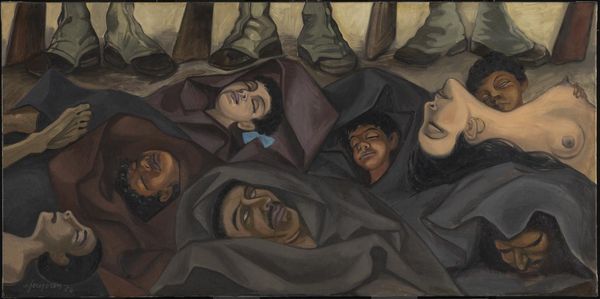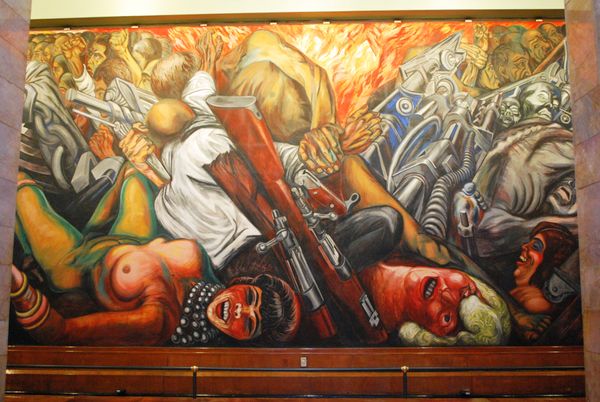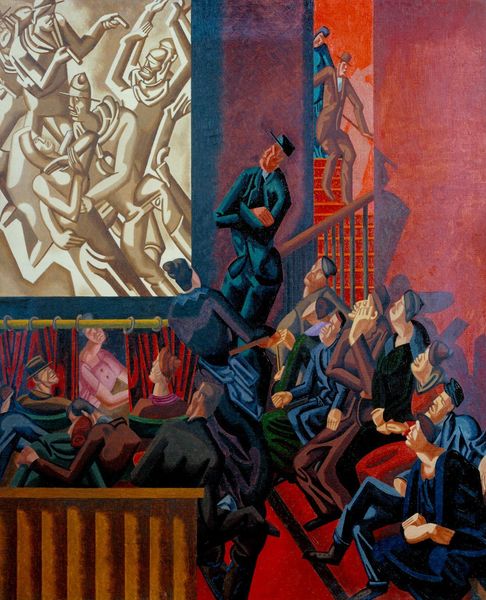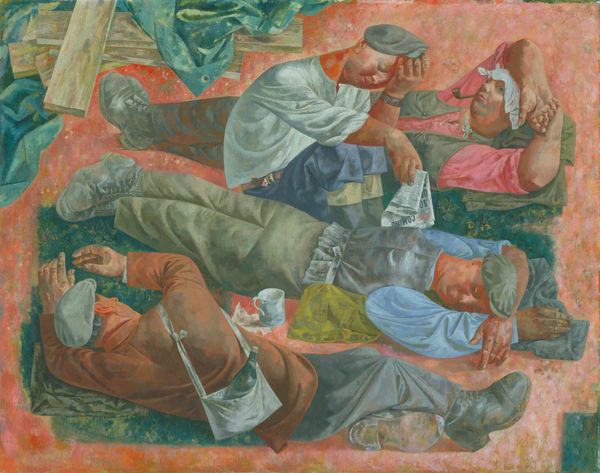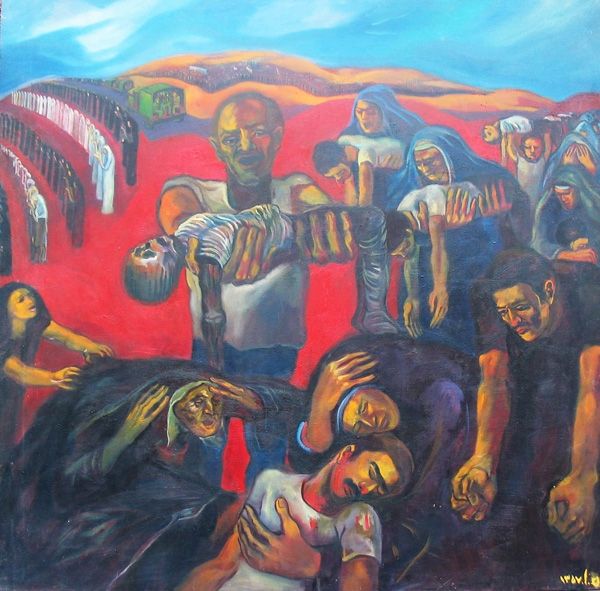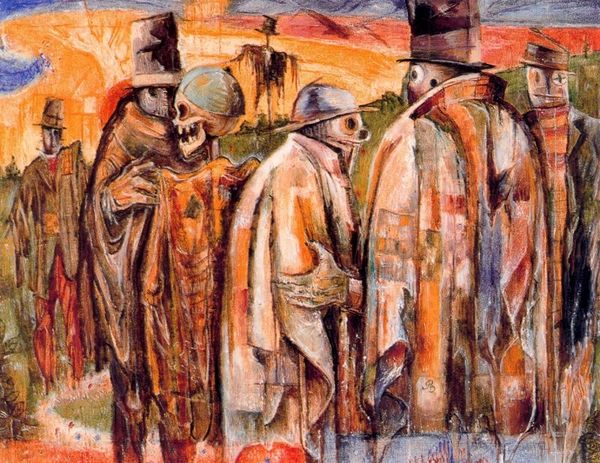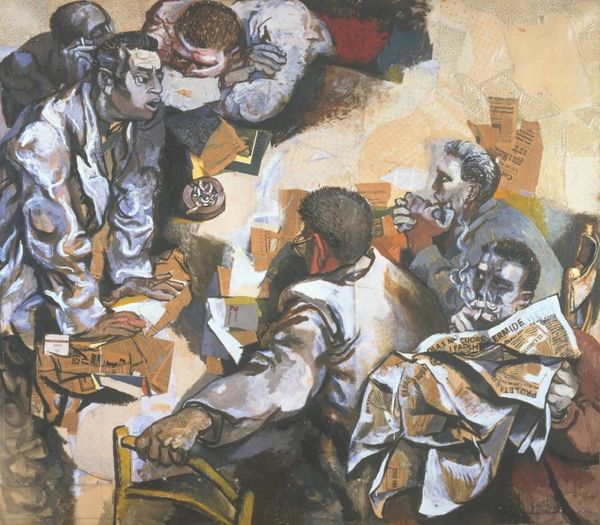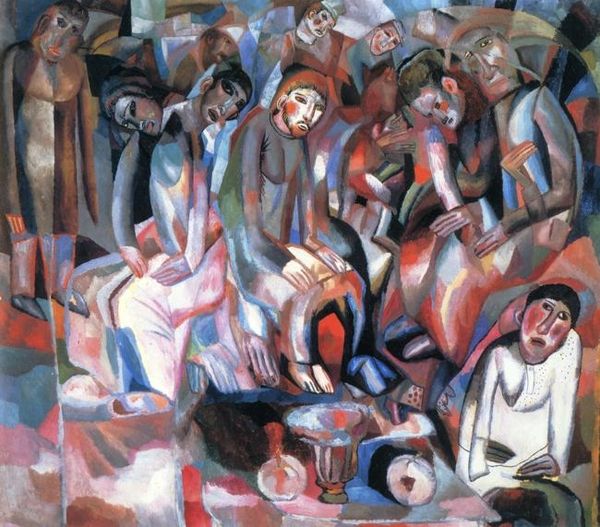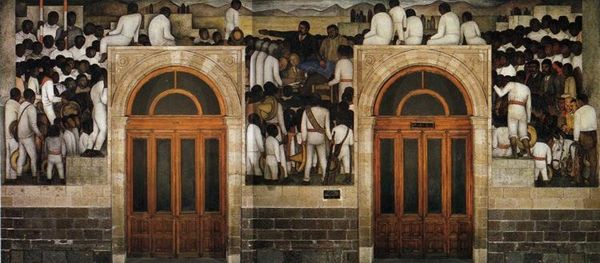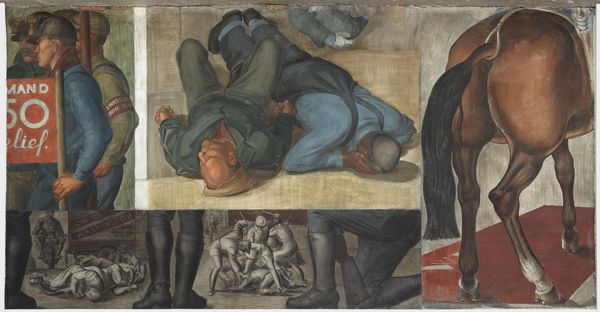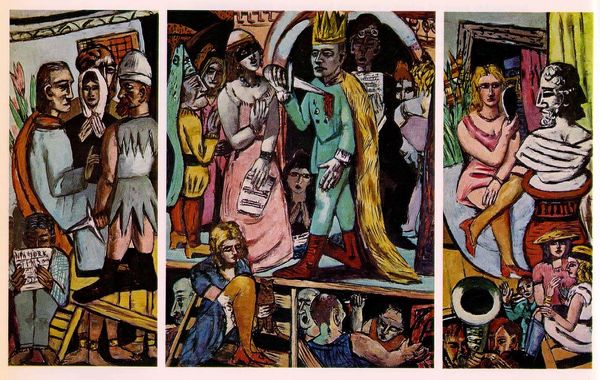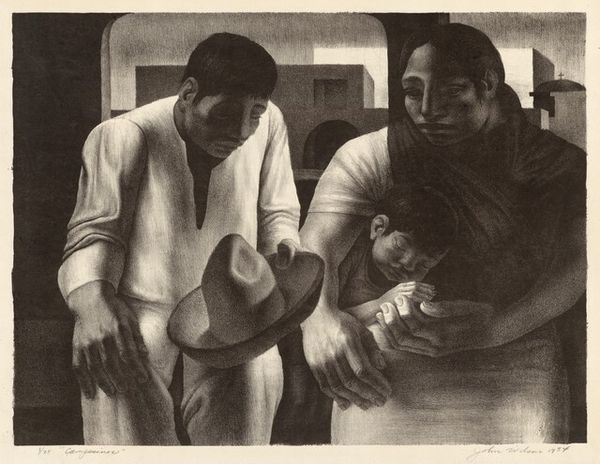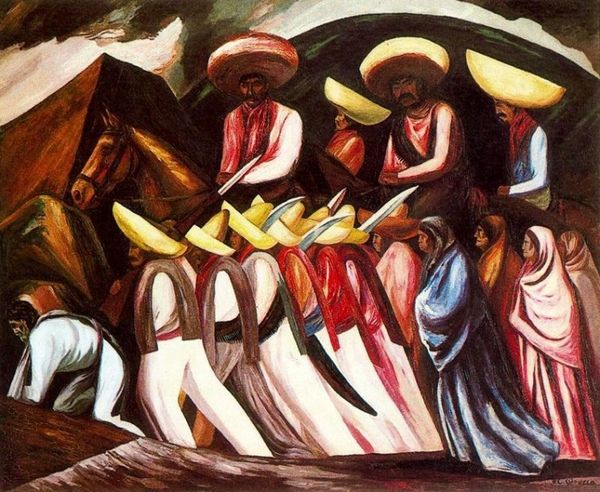
Call to Revolution and Table of Universal Brotherhood (Struggle in the Orient) 1931
0:00
0:00
painting, oil-paint, mural
#
portrait
#
narrative-art
#
painting
#
oil-paint
#
figuration
#
social-realism
#
oil painting
#
mexican-muralism
#
cityscape
#
history-painting
#
mural
#
expressionist
Copyright: Public domain
Curator: I find this work so compelling; Jose Clemente Orozco painted this mural, titled “Call to Revolution and Table of Universal Brotherhood (Struggle in the Orient)", in 1931. Orozco employs oil paint in order to develop a complex narrative mural about social revolution. Editor: There is a solemnity to this piece that’s hard to ignore. Even with the chaotic themes of revolution and struggle, the figures evoke a very somber tone overall. I'm intrigued by how these varied narratives play out in the mural. Curator: Notice how the composition divides the artwork into clear sections or moments, reflecting a disrupted and layered history that reveals historical wounds; consider Orozco's choice of somber colors which contribute to the overall feeling. The repeated motifs of tied hands evoke suppression and the lack of voice for these figures. Editor: Absolutely, and when viewed through a post-colonial lens, this artistic depiction makes the reality of revolutionary struggles undeniable and poignant. The palette of burnt umbers, browns, and blacks reminds me of decaying social orders. Curator: Consider how Orozco masterfully merges traditional symbolism with social realism to underscore themes of injustice. In many indigenous traditions, the orientation of these various figures indicates levels of spiritual access and visibility, which reinforces the powerlessness of figures such as the working-class on the bottom. Editor: That's interesting. This reading reveals how symbolism underscores political positions. It is worth exploring the depiction of a few figures, almost detached, on the other side of the mural that appear to signal an "Awakening," with each reaching a moment of truth amid a socio-political struggle. Curator: And the architecture on the right seems almost too geometric. I find it evocative of systems created during this historical time of political transition. There is something about the visual fragmentation that offers different possibilities. Editor: I agree that “Call to Revolution…” resonates strongly. Orozco asks for a new interpretation of power dynamics, echoing his firm desire to re-address the traditional artistic canon. Curator: Yes, the painting certainly makes a statement. I leave this viewing with questions about who exactly history has remembered. Editor: For me, the exploration lies in critically reassessing narratives through previously omitted cultural memory.
Comments
No comments
Be the first to comment and join the conversation on the ultimate creative platform.
